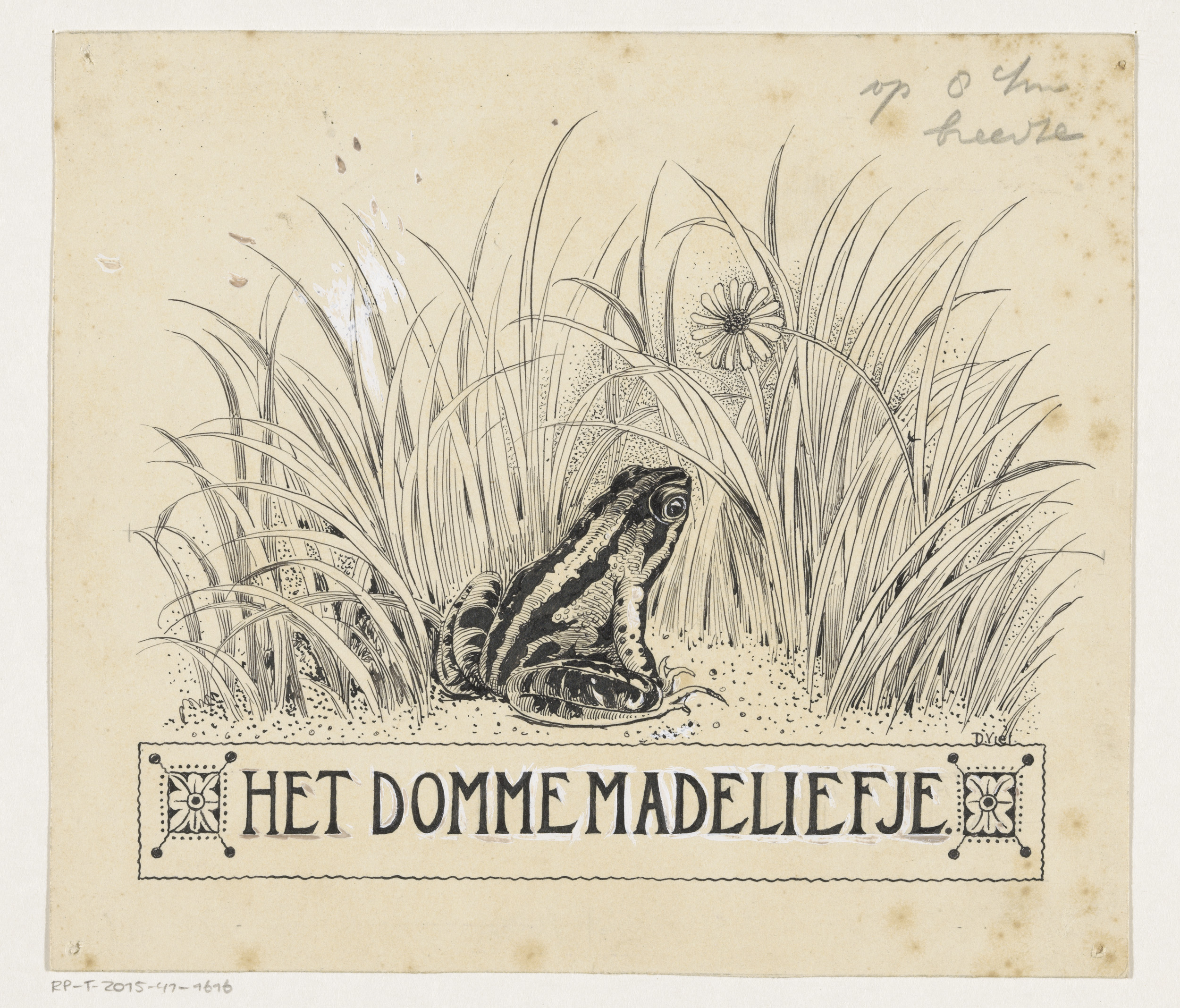Documentation
“Analysing Silliness” – Thorn Austin

D. Viel, Kikker kijkt naar een madelief, ca. 1915-35. Via: Europeana. Source: Rijksmuseum.
What do you think of when I mention a frog? A slimy green creature? A silly-looking jumping creature? A cute little dude on a leaf? Unless frogs are particularly scary to you, the idea of someone in an inflatable frog costume would probably be a mood-lifting sight, a welcome bit of silliness added to your day. The likely assumption is that this person does not pose a threat. That assumption is exactly what Portland ICE protesters are using as a tactic to counter the statements from President Donald Trump that Portland is war-ravaged. The solidarity of the frogs has grown steadily since protester Seth Todd was pepper-sprayed by officers on October 2, outside of the ICE facility while wearing an inflatable frog suit. Jordy, the creator of the website operationinflation.com, where visitors may contribute money to provide inflatable costumes to the protesters, stated, “When you have people in inflatables bouncing around… it’s going to be very difficult to say this was a war zone. … It de-escalates with ICE, it de-escalates with protesters, it de-escalates with counter-protesters—and, ironically enough, the pepper balls bounce right off” (Swindler 2025). The crowd of protesters has now grown to include more inflatables than just frogs.
With this phenomenon in mind, Anneke Jansen and Iris van der Tuin introduced object orientation, an integrative method that uses objects to bring together dynamic combinations of different perspectives. We were guided through the steps of Joseph Dumit’s work on Donna Haraway’s ‘Implosion Project’ to find non-obvious connections and analyzable dimensions to the inflatable frogs and other clowning objects used in protests in the United States today (Dumit 2014).
References
Dumit, Joseph. 2014. “Writing the Implosion: Teaching the World One Thing at a Time.” Cultural Anthropology 29(2): 344–62. https://doi.org/10.14506/ca29.2.09.
Swindler, Samantha. 2025. “Why Portland ICE Protesters Are Showing up Dressed as Giant Inflatable Animals.” The Oregonian, October 17. https://www.oregonlive.com/portland/2025/10/why-portland-ice-protesters-are-showing-up-dressed-as-giant-inflatable-animals.html.
